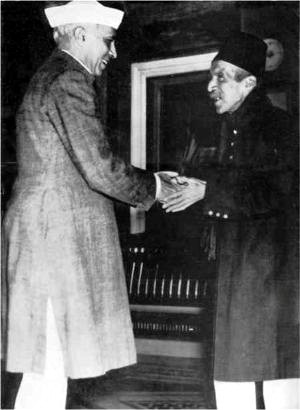Coinage of Golconda : striking copper
The Qutub Shahi dynasty dominated entire Andhra-desa or Telugu country from the beginning of the 16th century to the end of the 17th century. The founder was Sultan Quli who had migrated to India from Hamadan,Persia and had finally came to the Bahmani court during the reign of Mohammad Shah III. During his reign many foreigners came as he welcomed them generously. He impressed the Sultan with his various talents and was appointed governor of Telangana in 1496.This included the areas of Warangal and Golconda.He decalred independence in 1518, but remained loyal to the Bahmani Sultan. He did not strike any coins in his name. He issued coins in the name of the Bahmani Sultan from the Golconda mint.
The throne was taken over by his son Yar Jamsheed Quli after his assasination in 1593 which he himself got done. He ruled for seven years. During this time he issued coins in his own name. They were made of copper and bear the name of Mohammadnagar. The round coins weighed differently and the size too varied. The coins had both the titles Sultan and Shah at the end.

Copper coins, image.
Source : pexels.com
The rule of Sultan Jamsheed Quli in 1550 gave way to the rule by an young boy Subhan Quli who was Jamsheed Quli's son,with the help of a regent. However this arrangement did not work and Ibrahim Quli ascended the throne who was the sixth son of Sultan Quli, ending his exile at the Vijyanagara kindom. However there were coins issued in his name during the time of Subhan Quli's short reign of six months.
Sultan Ibrahim Quli Qutub Shah ruled for thirty years 1550 to 1580 A.D. He is remembered as a great Qutub Shahi Sultan as there were many developments during his reign. He issued coins in his own name from the Golconda mint.
The next king was Sultan Mohammad Quli Qutub Shah whose reign was from 1580 to 1612 A.D. He was a poet and a keen builder. He founded the city of Hyderabad. He built the Charminar,Jama Masjid, Darushifa and Badshahi Ashurkhana. the coins issued during his reign are both round and square issued from the Golconda mint. The weight is variable. There were coins issued from the mint at Hyderabad with the legend Abul Muzaffar Quli Qutub Shah on the obverse with date 1012 A.H on the reverse, ie. in 1603 A.D.
His nephew and son-in-law Mohammad Qutub Shah succeeded Sultan Mohammad Quli and ruled from 1612 to 1626 A.D. He started building the Mecca Masjid at Hyderabad. His was apeaceful reign. Coins were struck in his name in copper with the legend Abul Muzaffar Sultan Mohammad Qutub Shah on the obverse and date and name of the place of the mint ie. Hyderabad on the reverse (Darussultanat Hyderabad), For eg. : 1025 A.H.
The next ruler was Sultan Abdullah Qutub Shah who ruled between 1626 and 1672 A.D. The kingdom was attacked by Aurangzeb during his tenure and he had to enter a treaty with the Mughals and give his daughter in marriage to Aurangzeb's son and name him his heir. The copper coins of his time bear the legend Sultan Abdullah Badshah Ghazi or Sultan Abdullah Badshah or Abdullah Qutub Shah on the obverse and the place of mint, Hyderabad on the reverse. They resemble Mughal coins. Another variety was issued without the name of the Sultan with the legend Qutama Bilkhar-e-vassadath but the date is of his reign. The coins of all rulers show ornamentation like the half moon symbol, small circle, elongated 'v' among others.
The last ruler was Sultan Abul Hasan between 1672 and 1686/7 A.D.He was the son-in-law of Sultan Abdullah. His was a steady rule and was ended by the siege of Golconda by Emperor Aurangzeb in 1687. Coins were issued during his time had the same legend as in Sultan Abdullah's time with a difference only in the date. Coins were also minted at Pulicat by the Dutch. Many coins are available at the State Museum at Hyderabad, Telangana.

Dutch Golconda map,1706.
By Leiden, Van der Aa [Public domain], via Wikimedia Commons
There were other coins which were current in Golconda which included the Mughal coins of gold and silver,dinar,mohammadi of Gujarat,Larin of Persia, abbasis,tanknama,tanka, tretels of Siam, ducts of Hungary, sequins of Venice etc.The local name for the gold coin pagoda was hun.

Dutch Golconda map,1706.
By Leiden, Van der Aa [Public domain], via Wikimedia Commons
There were other coins which were current in Golconda which included the Mughal coins of gold and silver,dinar,mohammadi of Gujarat,Larin of Persia, abbasis,tanknama,tanka, tretels of Siam, ducts of Hungary, sequins of Venice etc.The local name for the gold coin pagoda was hun.
References :
- Qutub Shahi coins in the Andhra Pradesh Government Museum/Khan,Md. Abdul Wali, Hyderabad-Deccan : The Government of Andhra Pradesh,1961.
- M.A.Nayeem/The heritage of the Qutub Shahis of Golconda and Hyderabad,Hyderabad: Hyderabad Publishers,2006.
Posted by :
Soma Ghosh
Ⓒauthor


















